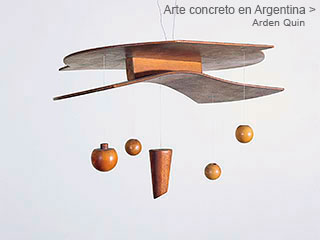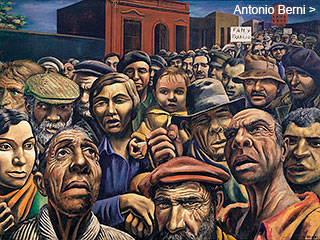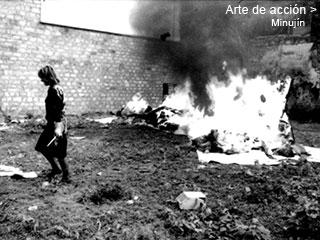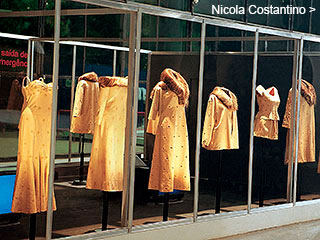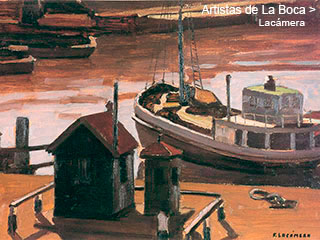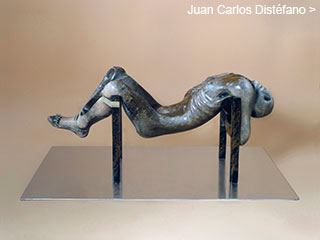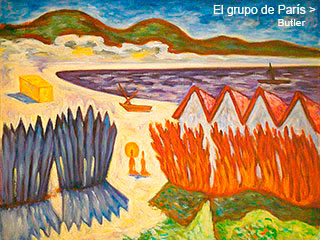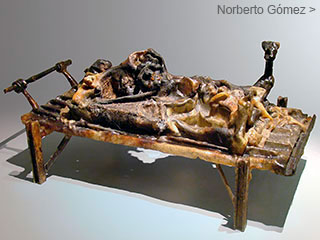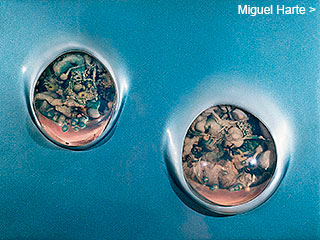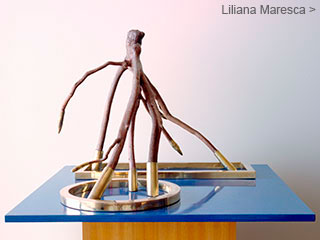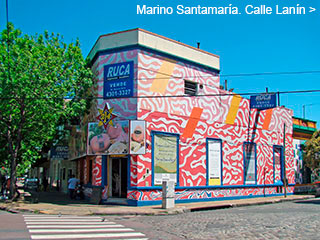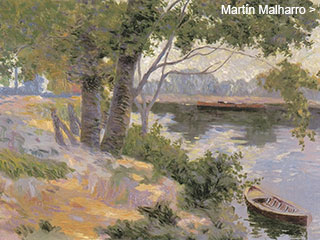Menú
Algunos dossiers
Juan Carlos
Distéfano
Distéfano
by
Adriana Lauria and Enrique Llambías
January 2003
January 2003
The dossier on Juan Carlos Distéfano spans from the time of his beginnings
as a painter to his recent works as a sculptor, a first for the CVAA. It covers
over forty years of his work and his commitment to art and reality. A special section offers a view on his work as a graphic designer, which he carried out mostly at the Di Tella Institute.
as a painter to his recent works as a sculptor, a first for the CVAA. It covers
over forty years of his work and his commitment to art and reality. A special section offers a view on his work as a graphic designer, which he carried out mostly at the Di Tella Institute.
1966
much artistic as ethical admiration, and whose life moves him deeply. Inspired by his paintwork, Distéfano will interpret his life and his work in other pieces such as Up to a Point of 1985 and Vase Broken in 1890 produced in 1988/89.
From 20 September to 10 October, he participates in a show of paintings and objects alongside Ricardo Carreira, Humberto Rivas, and Pablo Suárez at the Lirolay gallery.
In October, he takes part in the III Bienal Americana de Arte (lll American Biennial of Art) in Córdoba, organised by the Industrias Kaiser Argentina. The jury, formed by Alfred Barr Jr., Arnold Bode, Sam Hunter, Carlos Villanueva, and Aldo Pellegrini, leans towards the abstract-geometric tendencies. They award the Grand Prize to a kinetic work by Venezuelan Carlos Cruz Diez, and the First Prize to a work by César Paternosto wrapped in shaped canvass They only give the Second Prize to an imposing neo-figurative composition by Ernesto Deira.
Distéfano’s entry, which includes Three Versions, Struggle, and Cavalcade, has wide acceptance among artists and critics who consider him the revelation of the contest, and there are numerous criticisms to the jury for not having given him any distinctions.  The opinion of J. A. García Martínez is interesting in that it stresses a dominant tendency among young Argentine artists that could be described as “rebellious pop”, in which
The opinion of J. A. García Martínez is interesting in that it stresses a dominant tendency among young Argentine artists that could be described as “rebellious pop”, in which
more


